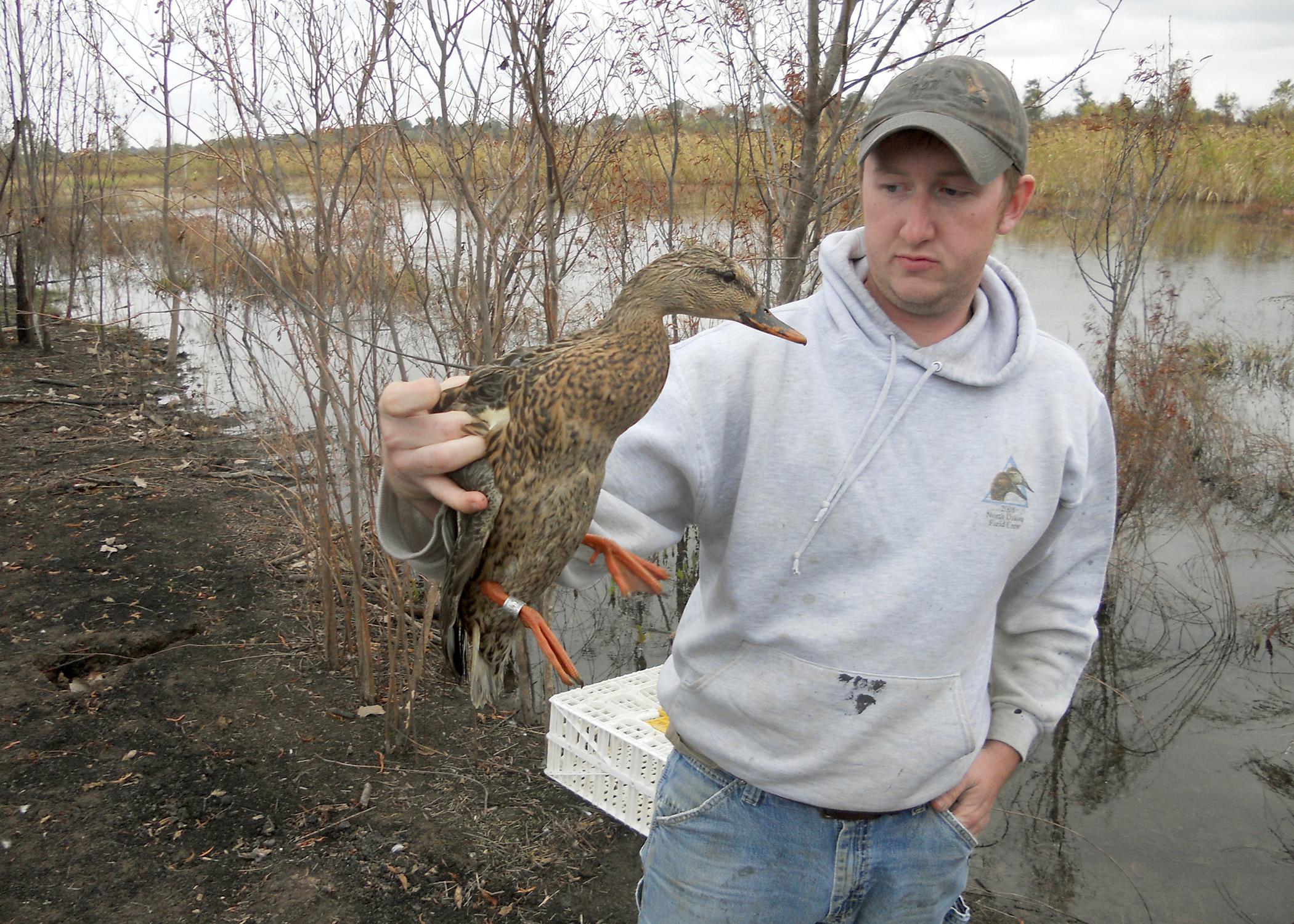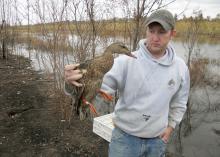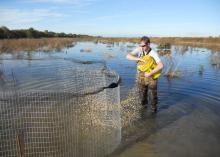Information Possibly Outdated
The information presented on this page was originally released on February 5, 2013. It may not be outdated, but please search our site for more current information. If you plan to quote or reference this information in a publication, please check with the Extension specialist or author before proceeding.
MSU scientists study ducks in the Delta
By Meg Henderson
MSU Forest and Wildlife Research Center
MISSISSIPPI STATE – Results from a Mississippi State University study of mallard ducks in the state’s south Delta revealed information that could help shape conservation and habitat management programs.
For several years, Brian Davis, assistant professor in MSU’s Department of Wildlife, Fisheries and Aquaculture and researcher in MSU’s Forest and Wildlife Research Center, has been studying how mallards use the overall landscape and how the landscape affects their survival.
“Ultimately, we want to know how mallard survival is influenced by its use of several habitats of the Delta,” Davis said. “Survival of birds in relation to hunting seasons is also important.”
Studying the mallards over the course of time yielded a lot of information. Davis said the birds’ movements, habitat use and survival reflect landscape quality.
“We can learn more about survival by examining habitat use among ducks of different ages and body masses,” he said.
To determine habitat use and survival rates, Davis and his team captured and equipped a sample of 126 female mallards with backpack-style, very-high-frequency radio transmitters. Researchers used the transmitters to track the birds’ locations daily and note mortalities.
“The problem is that you have to be in close enough proximity – two miles or less -- to receive a signal to pinpoint where the bird is,” said Joseph Lancaster, awildlife, fisheries and aquaculture graduate student involved in the study.
To track the ducks, the researchers drove around in trucks and chartered a fixed-wing airplane, each fitted with special antennae.
Data from the 2010-2012 study showed an overall winter survival rate of 76 percent. The highest daily survival rate occurred in moist-soil habitats, such as shallowly-flooded wetlands of annual grasses and weeds, followed by agricultural, forested and permanent water habitats.
Hunting impacted mallard survival, but not as much as researchers expected.
“We saw a higher percentage of non-hunting mortalities than hunting mortalities,” Lancaster said.
Davis said shooting a radio-marked duck is not illegal, and invited hunters to contact them to add to the study’s data, which can benefit them as it is translated into land management strategies that lure more ducks to the Delta.
“The data might reveal where conservation programs should be focused,” Davis said. “For private landowners, we can help them with habitat management that could attract more mallards to their land,” Davis said.
Davis and Lancaster plan to continue their study through 2014.
“I’m staying on to do a Ph.D. with Dr. Davis, and we’re expanding the study northward,” Lancaster said. “The first part focused on an area south of Highway 82. We’re going to expand to the north part of the Delta where there’s a higher concentration of mallards.”
Davis said the last study of this kind in Mississippi was in the 1980s, and on-going study is needed.
“As the landscape changes, we need to revisit the same questions,” he said. “Survival rates may be different in subsequent eras, as farming and conservation practices change. When government programs, such as reforestation incentives for landowners, come and go, or when soybeans come and go, it modifies the landscape.”
From November to early March, mallards and other waterfowl make the Mississippi Delta their seasonal home. The Mississippi Alluvial Valley extends southward along the Mississippi River from the Bootheel of Missouri through eastern Louisiana and annually supports about 40 percent of the Mississippi flyway mallard population during the winter.
The study was funded by the Mississippi Department of Wildlife, Fisheries and Parks; the Natural Resources Conservation Service through a Cooperative Ecosystem Study Unit agreement with Mississippi State University (Migratory Bird Habitat Initiative); and MSU’s Forest and Wildlife Research Center.
Alan Afton, assistant leader for the U.S. Geological Survey, Louisiana Cooperative Fish and Wildlife Research Unit; Ed Penny, Wildlife Bureau Director with MDWFP; and Rick Kaminski, the James C. Kennedy Endowed Chair for Waterfowl and Wetland Conservation at MSU’s College of Forest Resources, collaborated on the project.








